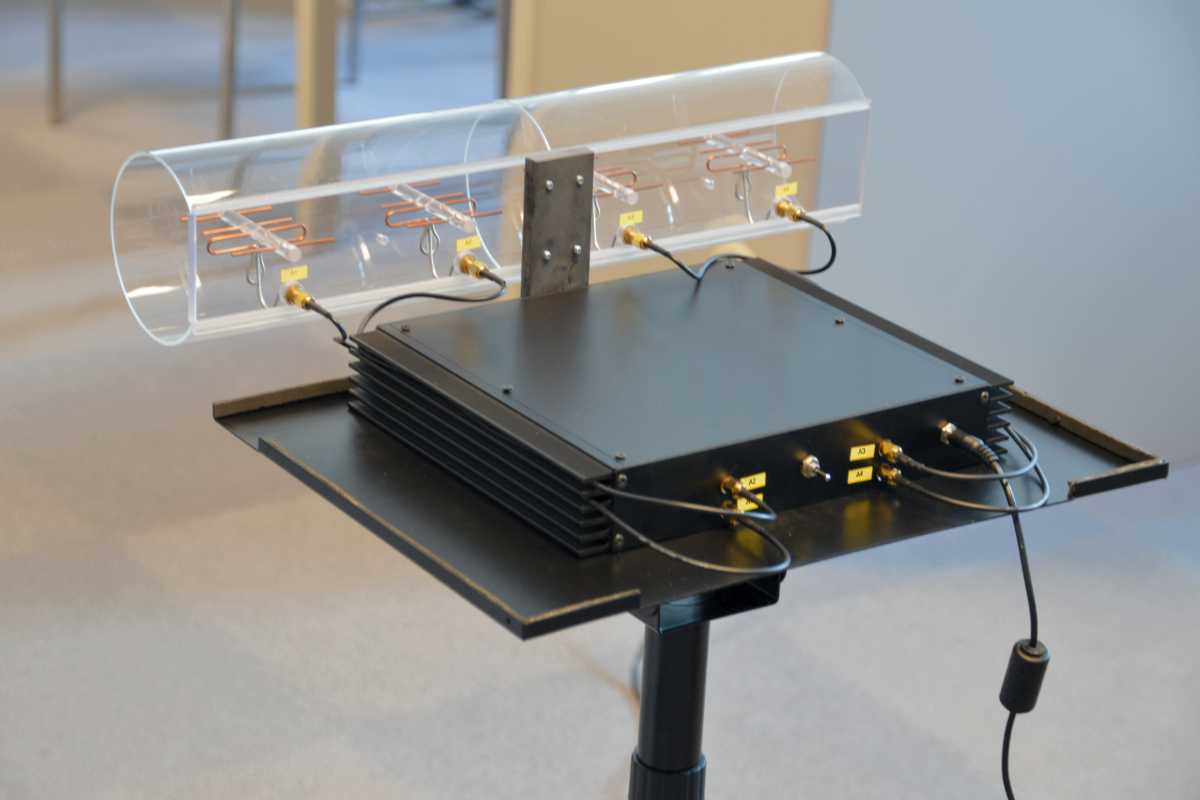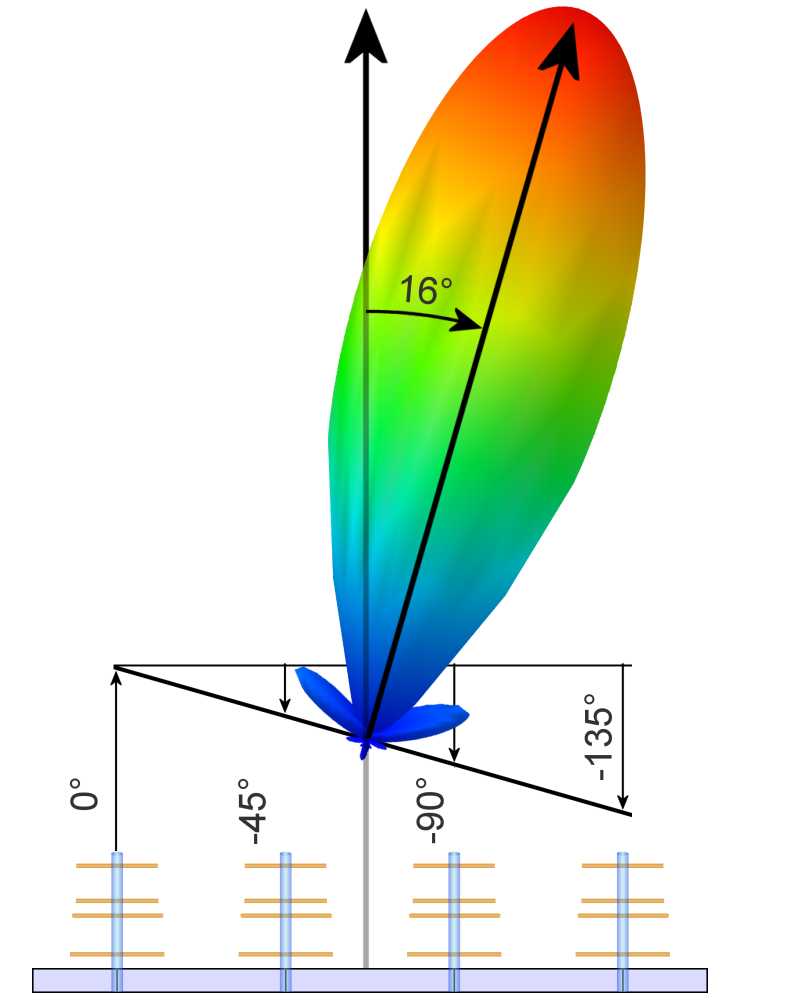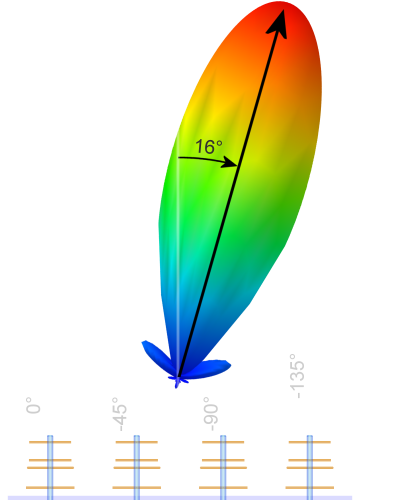Phased-Array Demonstrator

Figure 1: Demonstrator for the functionality of a phased array antenna
Phased-Array Demonstrator
The phased array demonstrator is a simple training device, designed to use in a classroom. With the help of this device can be demonstrated practically how a phased-array antenna works.
An oscillator transmits with less power over a group of four Yagi antennas in free space in a free ISM frequency band (Industrial, Scientific and Medical band). Here was chosen a frequency between 2.40 – 2.48 GHz. The resultant power flux density from the antennas in the space can be measured by a commercially available high-frequency analyzer. The direction of maximum radiation can be thus determined.
An electronic phase shifter which is controlled by a static voltage may change the phase of each individual radiator to 45, 90, or 135 degrees. In total, this results in swiveling the direction of the radiations maximum by about 16 degrees to the left or (the other switch position) to the right. The far field of the antenna starts at a distance of about 3 to 4 m. Here the to measured radiation is very weak yet, and it is measured in microwatts per square meter. Incidentally it may be pointed out that the by the analyzer received power decreases with the square of the distance (Free-space path loss). If a direction with maximum power density was found, so the direction of the radiation can be changed using a changeover switch, so that the instrument cannot indicate any value.
The commercial high-frequency analyzer uses a very broadband calibrated antenna. With this antenna can be measured the radiation caused by the mobile phones of the students too. In order to prevent this falsifying the measuring result by interference, a narrow-band Yagi antenna with high directivity has been developed for this instrument. However, this additional measurement antenna is not calibrated. Therefore the displayed by the meter values can be compared only as relative values with each other.

Figure 2: Principle of the antenna pattern swiveling in phased array demonstrator

Figure 2: Principle of the antenna pattern swiveling in phased array demonstrator
Figure 2 shows the swiveling principle: one of the outer antennas has no phase shift and serves as a reference. If no phase shift would act, so the sum signal would show approximately in the geometric direction. The other antennas receive a gradually stepped value for the phase shift now. This phase shift can be a delay only, therefore the negative sign. The individual antenna diagrams now add up to the shown in Figure 2 overall diagram. Because of the phase shifts this diagram is now tilted by 16 degrees to the right. Such electronic swiveling can be made extremely fast: faster than any motor could rotate this antenna (and faster as you can set the switch).
This specialized training device has been developed by Radartutorial. The construction and distribution is performed by Köster Systemtechnik (Germany).
